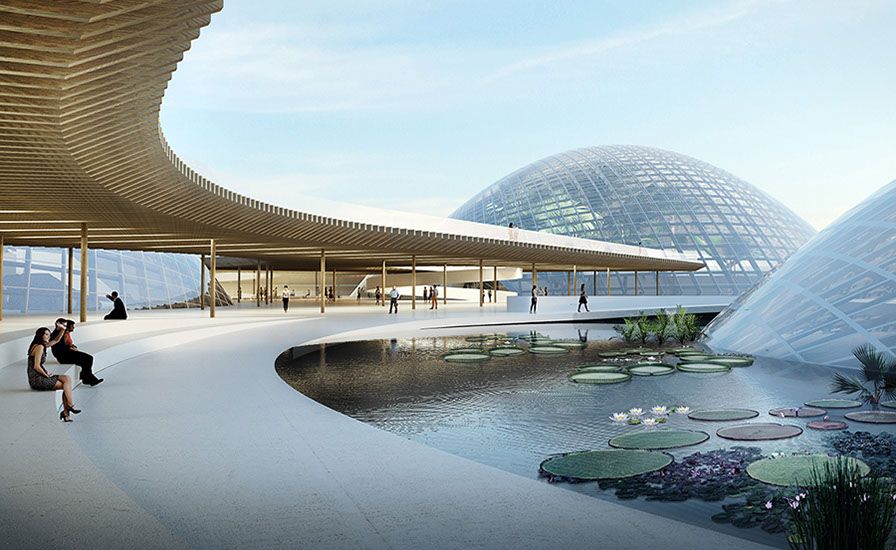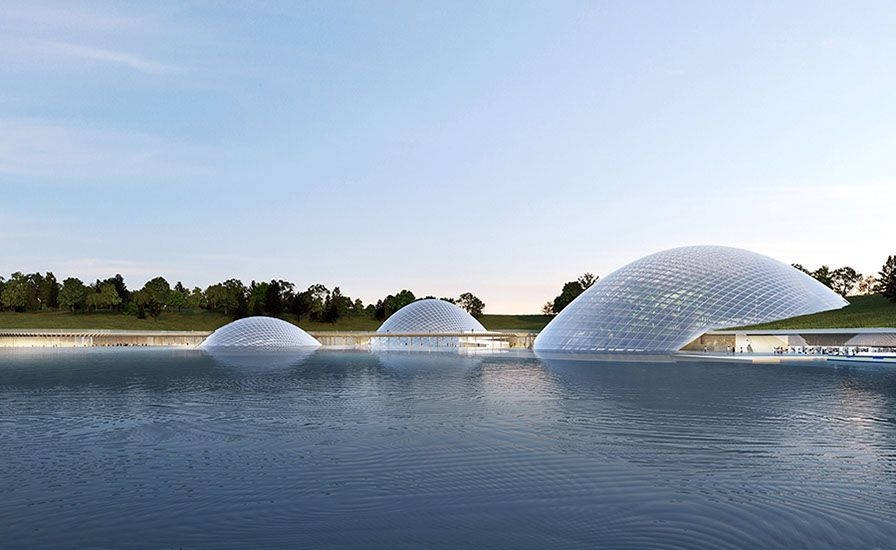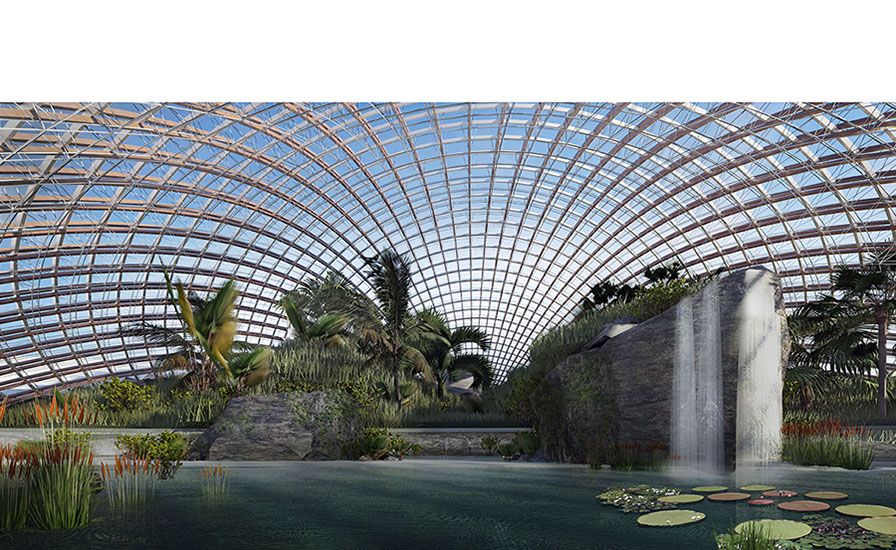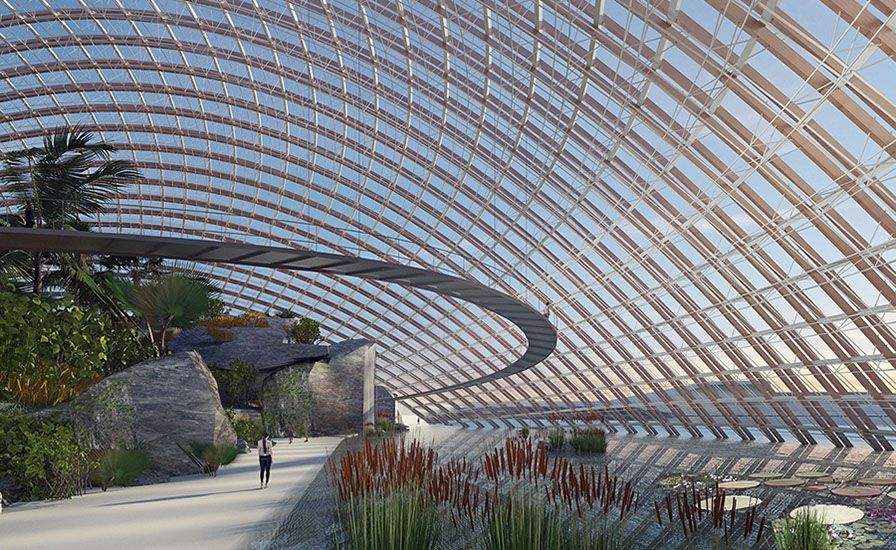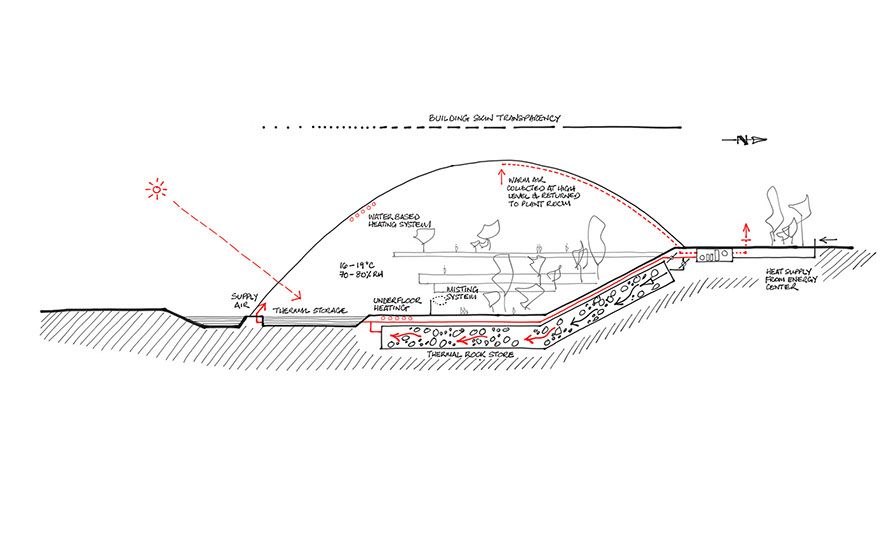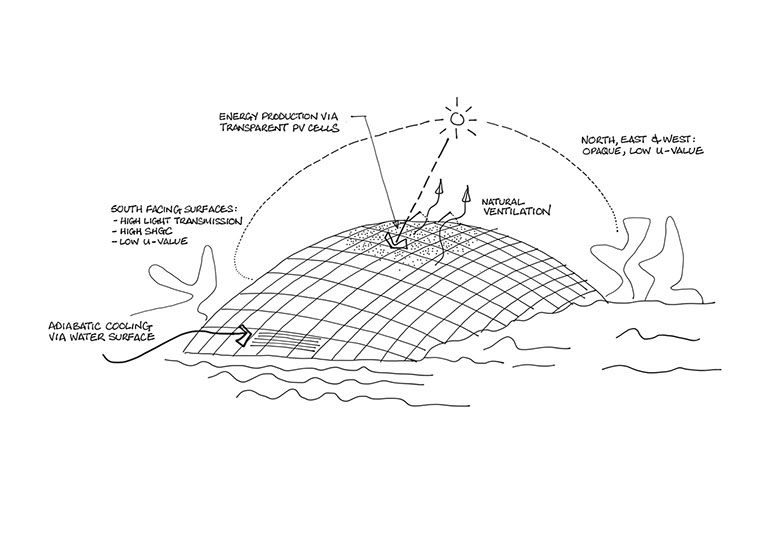The project introduces a vibrant artificial landscape with an attractive topography with mountains and hills, wild and elegant vegetation, lakes and waterfalls, paths and buildings. Nature and architecture communicate here in a harmonious way – the green space assuming a leading role. The architectural concept is based on the already existing landscape plan and balances natural landscape, architecture, technological and ecological solutions. The entrance building, connected to the street and a big parking lot, plays a dual role: it invites the urban landscape into the garden and at the same time lets the natural landscape interact with the built environment. The reception and the welcoming lobby are situated directly near the entrance. A cantilevered viewing platform above the water level leads the visitors to the center of the Botanical Garden. Here they can relish the view from the platform or descend to the lake, which flows through the whole of the park. The natural museum is embedded into the Entrance Building. It is organized along a timeline of different spatial and sensorial experiences, in order to reflect the focus of the museum on natural history.
The entrance building, connected to the street and a big parking lot, plays a dual role: it invites the urban landscape into the garden and at the same time lets the natural landscape interact with the built environment. The reception and the welcoming lobby are situated directly near the entrance. A cantilevered viewing platform above the water level leads the visitors to the center of the Botanical Garden. Here they can relish the view from the platform or descend to the lake, which flows through the whole of the park. The natural museum is embedded into the Entrance Building. It is organized along a timeline of different spatial and sensorial experiences, in order to reflect the focus of the museum on natural history. 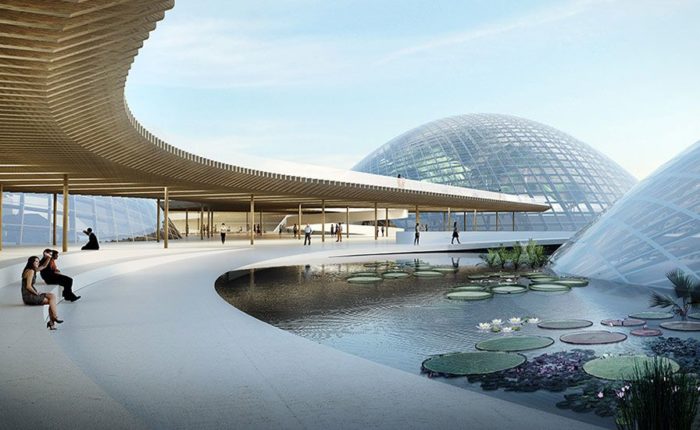
Greenhouse
The Greenhouse represents the centerpiece of the new Botanical Garden. It is composed of three domes destined to accommodate plants of different climates, together reinventing the silhouette of the Garden. Two of the three domes accommodate the pavilions for tropical and desert plants. They are integrated into the exterior topography, facing south for maximum exposure during the summer and winter, potentiating an energetically and structurally well thought-out solution. The third dome – the aquatic plants– is designed as a stand-alone piece on the lake. The choice of materials follows the subject-matter, using natural elements to create the atmosphere.
They are integrated into the exterior topography, facing south for maximum exposure during the summer and winter, potentiating an energetically and structurally well thought-out solution. The third dome – the aquatic plants– is designed as a stand-alone piece on the lake. The choice of materials follows the subject-matter, using natural elements to create the atmosphere.
Bonsai Museum
Another highlight of the Botanical Garden is the Bonsai Museum, designed as a rotating bowl integrated into the park’s topography, welcoming an arena for the plant’s display.
Research Center
The Research Center houses laboratories, studios, office spaces, workshop and meeting rooms, lecture halls as well as a library. In order to maximize its function, the program is divided into separate buildings, connected by an interior path along the ground floor. 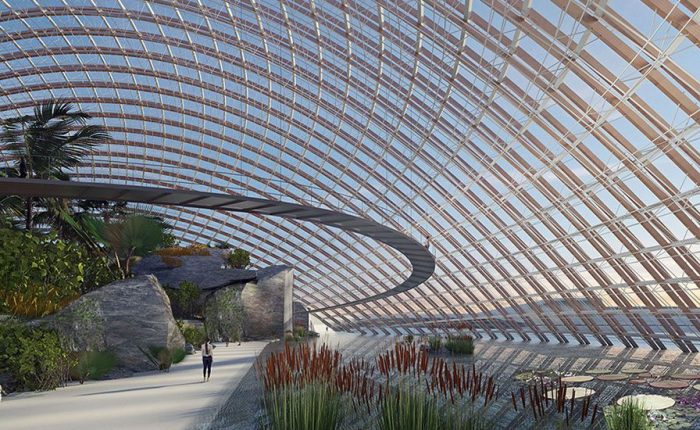
 Project Info
Project Info
Architects: Delugan Meissl Associated Architects
Location: Taiyuan, China
Project manager: Sebastian Brunke
Project team: Diogo Teixeira, Bernd Heger, Tom Hindelang, Klara Jörg, Rangel Karaivanov, Leonard Kern, Kinga Kwasny, Toni Nachev, Petras Vestartas
Coordination: Yiju Ding
Structural Engineering and Facade: Bollinger + Grohmann Ingenieure
Electrics: Cody Energy Design
Landscape design: Valentien + Valentien Landschaftsarchitekten und Stadtplaner
Year: 2019 (expected)
Type: Cultural Center, Mixed Use, Research Center, Museum, park
